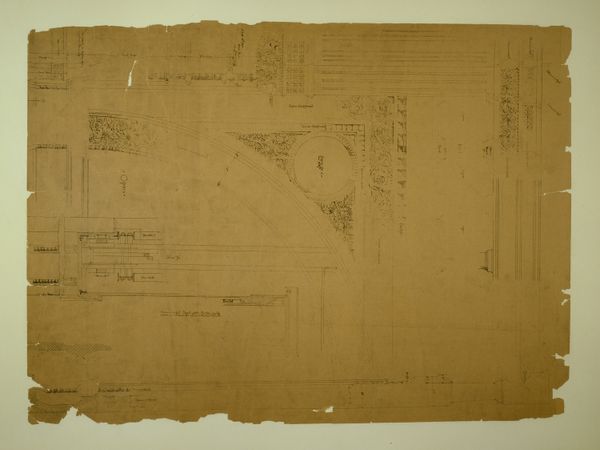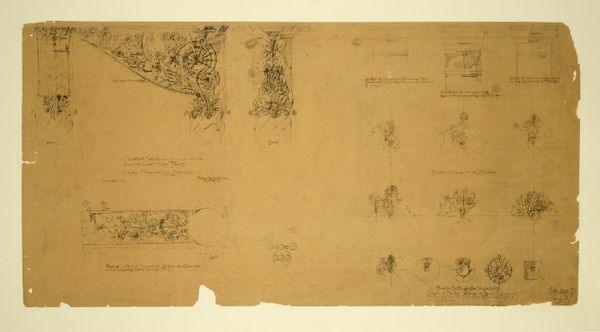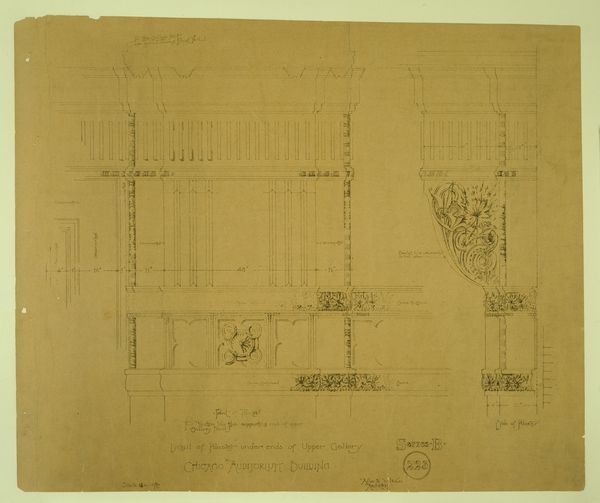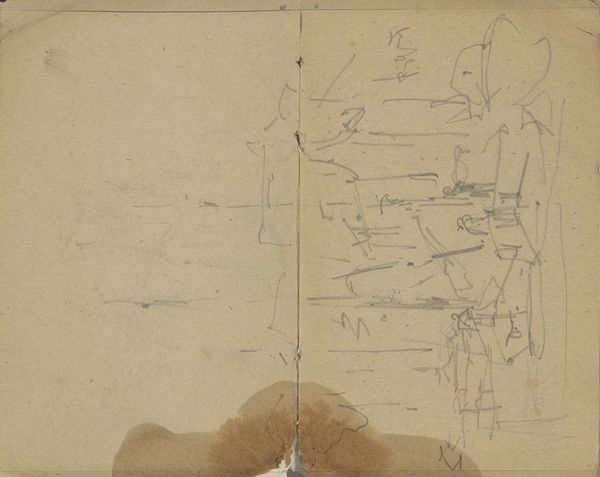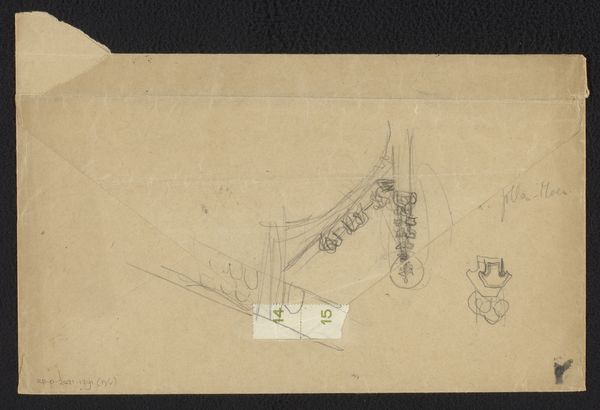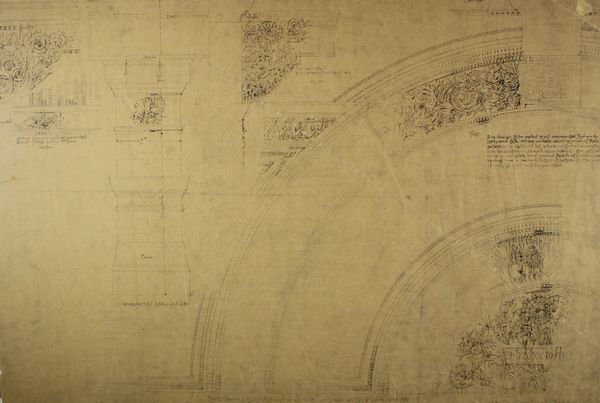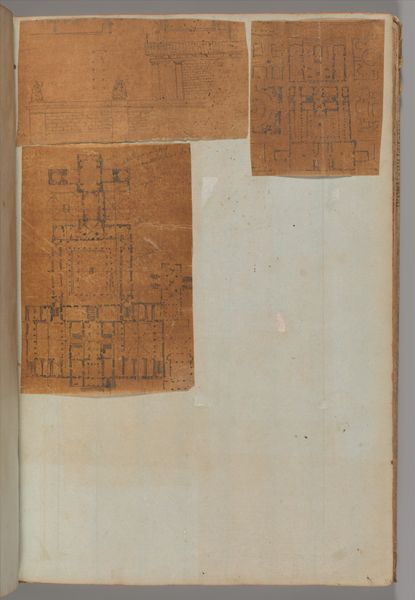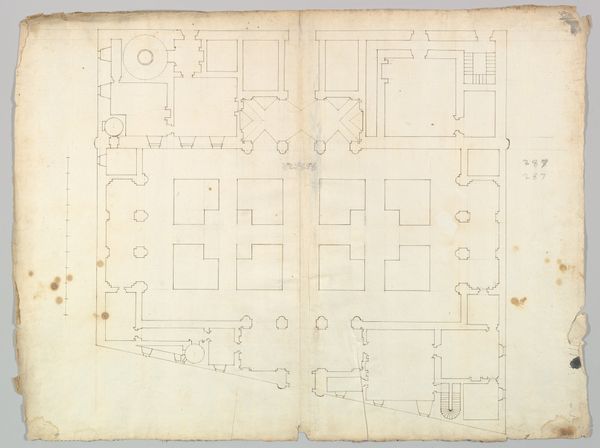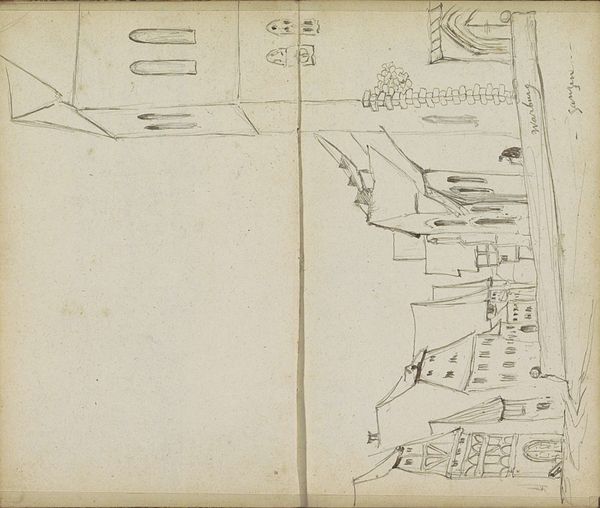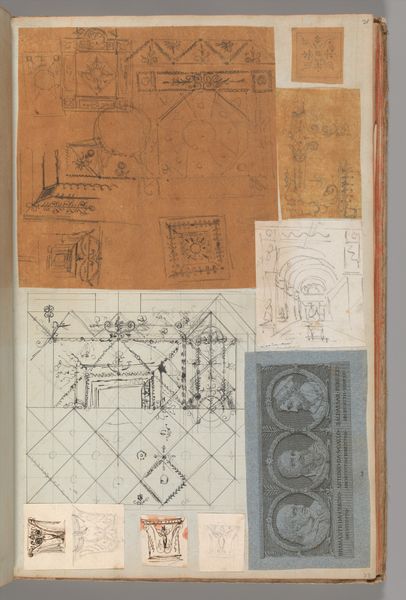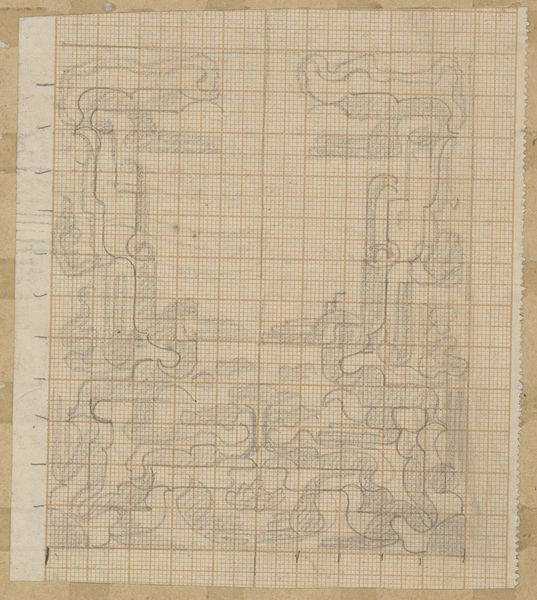
Auditorium Building, Chicago, Illinois, Plaster Details for Balcony c. 1887
0:00
0:00
drawing, paper, architecture
#
drawing
#
neoclassicism
#
paper
#
academic-art
#
architecture
Dimensions: 76 × 101.3 cm (29 15/16 × 39 7/8 in.)
Copyright: Public Domain
Curator: This drawing presents plaster details for the balcony of the Auditorium Building in Chicago, created around 1887 by Adler & Sullivan. Editor: It looks incredibly detailed. Almost skeletal, as if someone has x-rayed the decorative bones of the building itself. I can see various structural and ornamental components drafted with a sharp hand on this aged paper. Curator: Exactly. It exemplifies the firm’s integration of neoclassicism with emerging modern design principles. Remember, this was a time when the Beaux-Arts tradition still heavily influenced architectural design. You can really see it here; this detailed work showcases that balance. Editor: Yes, but I find myself thinking about the process itself. The materiality speaks volumes. Imagine the craftsman interpreting these lines into plaster. The labor, the sheer number of hands involved. Each curve meticulously molded, replicated across a vast auditorium space. It brings into focus the socio-economic aspect: the conditions, the workers involved... who are they? Curator: That is definitely important. These designs also represent power dynamics; these highly ornamental spaces would democratize culture through affordable tickets, while workers and manufacturing districts would be ignored. Editor: Absolutely. While architecture often symbolizes permanence, drawings like these remind us of the constant negotiation between design and physical creation. The hand behind the lines. These drawings are not merely blueprints but evidence of craft in progress. And without that perspective, it would simply remain an ideal, untouched, and theoretical. Curator: True. Beyond craft, these drawings offer a look at design and city life during the time. This reminds us that drawings like this are not only important for its architectural features but social as well. These kinds of sources helps historians recreate and better study architectural history, shedding light on many factors such as technological developments, art ideals, class or social structure. Editor: Precisely, it's this blend of the intellectual and the material that I find so engaging about revisiting such pieces. It is this interdisciplinary approach of art history, where the architectural and the social come together. Curator: A tangible legacy of an era.
Comments
No comments
Be the first to comment and join the conversation on the ultimate creative platform.
